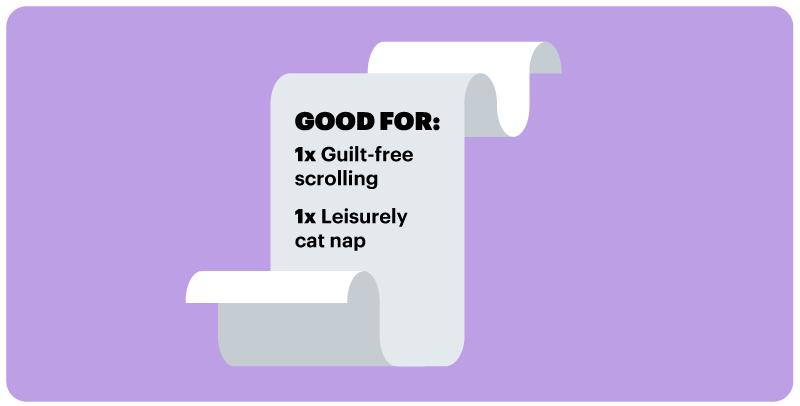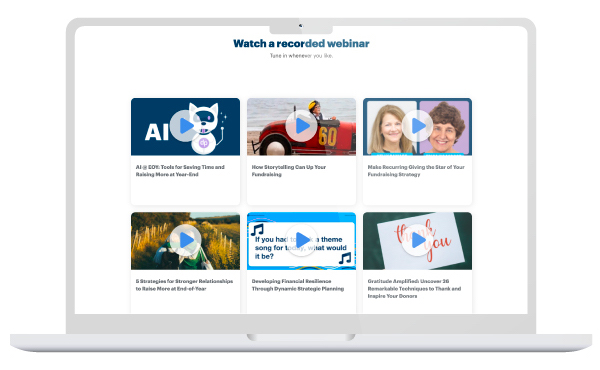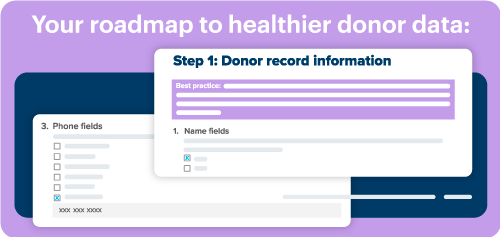April 19, 2024 | Categories DonorPerfect Fundraising Software, Featured
I have five hours a week and no budget. Here’s how I fundraise.
This blog is written for the founders, one-human-shows, every-hat-wearing, grassroots champions of small and lean nonprofits. As a communicator and former full-time fundraiser, I know that a lot of advice for nonprofits and fundraisers assumes readers already have industry knowledge, connections, and support for their development operations.
But for people who have started and are running their own nonprofits mostly off of their own grit and passion, it can be hard to spot the difference between fundraising best practices and Marie Antoinette-style, “let them eat cake” naivety. Of course, you’d like to segment your fundraising appeals into different messages for different audiences – you’ll handle that once you have an audience to begin with.
I recently started volunteer fundraising for a community choir and find that my experience translates well for nonprofit professionals whose jobs are mostly other duties as assigned. I dedicate no more than 5 hours each week to choir activities, and my resources include my laptop, my experience, and – with any luck – occasional lightning strikes of inspiration.
A lesson I learned very quickly (and frequently the hard way) is to keep one eye on my aspirations and the other on my very real limits. Here are five tips on how to fundraise efficiently, so you can raise the resources you need while protecting your peace.
Simplify and delegate
In case you need it, here’s a permission slip to take a load off.

A lot of traditional, highly visible fundraising methods, such as 5k fun runs or galas, are expensive in terms of time, money, and effort. You don’t need to have a flashy event to get your fundraising off the ground. And you don’t need to apply to complicated grants that come with cumbersome reporting requirements attached to create a sustainable funding pipeline.
A great place to start simplifying your fundraising life is to create an elevator pitch and have your business cards ready for questions and follow-up. I’ve found that simply telling people in my life, “I’m fundraising for my choir,” and having some surface-level knowledge about the organization, its history, and our goals has led to more connections and prospects than dreaming about purchasing marketing lists I can’t afford.
Are you a passionate champion for your cause but new to fundraising as a profession? We have your back! Watch the recording of our webinar, Growth Tips for New and Beginner Fundraisers, for helpful tips from seasoned pros.

Another easy way to save time is to delegate as much as possible. If there are people in your life who have offered to help, take them up on it! You’ll build community by working on projects together, and they’ll share their positive experiences with their networks.
But if you don’t feel comfortable delegating to another human, or you’re not sure who you can turn to for help, you’re not at a loss. Which brings us to our next point:
Use digital assistants
Generative AI has revolutionized the way I fundraise, and it can do so much more than write. Here are a few tasks I’ve outsourced to free AI tools, including claude.ai, Chat GPT, Canva (pro tip: Canva Premium is free for nonprofits!), and davinci.ai:
- Find potential grantmakers and funders whose goals align with mine
- Create a recruitment flier to attract more singers
- Remind me to follow up with email conversations that have been dormant for a specified period of time
- Build a schedule based on my availability, commitments, and goals
- Create a template for grants based on standard/average prompts, word counts, and application requirements

Invite one friend
I recently asked a fundraising consultant for her recommendations on getting “donor zero” in the door. Her advice was sound, practical, and totally attainable no matter how much time you can dedicate to fundraising.
Try one or more small, low-key launch parties to start spreading the word. Invite your friends and family, and ask each of them to bring just one friend. Don’t underestimate the joy and power of a good potluck to save on costs and give your guests space to shine and connect over their specialty recipes.
For my choir, this will look like a “very happy hour,” in which choir members will supply some snacks and some drinks, suggest a $5 donation, and we’ll alternate singing and mingling with our guests. It doesn’t put too much pressure on one person to plan, it shows our community the value we get from making music together, and it opens the door to future recruitment and gift conversations with guests.
Social media ads can be the rocket fuel you need to reach your donor acquisition goals. Check out our webinar, 100 New Email Subscribers in 7 Days, featuring nonprofit expert Dana Snyder!

Set and share micro goals
For lean fundraising operations, splitting your projects into micro goals can help your fundraising goals feel realistic and attainable. For example, if you want to improve the kitchen for your hunger alleviation nonprofit, you could try creating crowdfunding campaigns or wish lists for each item or service you need.
The beauty of crowdfunding for clear and specific needs is that, once your links are shared, you never know who might be willing and able to meet your needs, often with gifts-in-kind so you can use your funds raised for other, related needs.

Keep good records
When I offered to take on fundraising for my choir, a long-term choir member lent me her archives and I cannot thank her enough. I have years’ worth of programs, repertoire, singer profiles, quotes from members, financial information, and more to supplement and strengthen my grant applications.
If you’re fundraising for a newly established nonprofit, start keeping helpful records and files now to set yourself up for success in the future. And if you’re with a nonprofit that’s been around for a while, make friends with whoever has a lot of institutional memory. Their knowledge might just be your best asset.
Avoid mistakes caused by messy, inaccurate data with the Clean Data Checklist for Nonprofits! Learn best practices for records, create your own rules for data with special circumstances, prepare quick and accurate reports and more.

When it comes to creating a successful fundraising operation, you don’t have to – and shouldn’t – go it alone. And when you’re responsible for more than just fundraising, you can save yourself some serious stress by simplifying, delegating, and leaning on helpful technology. Fundraising software like DonorPerfect can help you save significant time while raising more money – sign up for a demo to see if DonorPerfect is the right fit for your fundraising operations.
See DonorPerfect in action
#Efficiency #Tips #Small #Nonprofits











